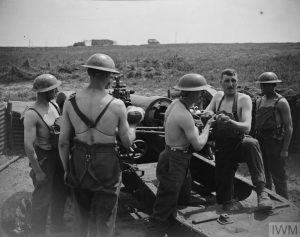Some, perhaps most, of the statistics in WW1 are difficult to comprehend. With the wisdom of hindsight, it is easy to say that things should have been done differently. Of course they should. In the words of the Spanish American philosopher George Santayana, “Those who cannot remember the past are condemned to repeat it”. Politicians and military leaders were faced with issues far beyond their imagining.
At Neuve Chapell in March 1915, in just 35 minutes, more artillery shells were fired than during the entire Boer War. The logistics of supplying the guns was expected to be the major problem. Shells are heavy. The French ‘75’ was capable of firing 15 shells a minute. Assuming that the crew could keep pace, and that the barrel did not overheat, that required over six tonnes of shells per hour per gun. In theory, a single battery of four, six or eight guns could use tens of thousands of shells every day. Production of shells in late 1914 was approximately 100,000 per month. It is very easy for us to see that manufacture of shells was going to become a major problem, and that it would happen in the very short term. And so it did. In May 1915, reports reached the newspapers that guns were being limited to firing four shells a day. 60-70% of all casualties in WW1 were caused by artillery. Placing a severe limit on the rate of fire had a major impact on the Army’s ability to mount effective offensive and defensive actions. This became known as the Shell Crisis. It led directly to the fall of the Liberal Party Government under Asquith and the formation of a Coalition Government.
Industry was reorganised to effect a massive increase in shell production. Society was reorganised, with thousands of women brought into the workforce for the first time. The impact was dramatic. In the week before the ill-fated assault on the German lines on 1st July 1916 (the opening day of the Battle of the Somme), 1.7 million shells were fired. 50 million shells were produced in 1917.

As stated in ‘Serving again -1916’ Patrick expressed a desire to serve in the artillery as opposed to the infantry. As the photo shows, when the supply problem had been fixed, the men manning the guns worked hard. Tactics had changed as well. Precise targeting of the enemy’s guns was increasingly adopted by innovative Generals such as the Australian John Monash. The equation may have changed slightly, but the artillery men still suffered lower casualty rates than the infantry. Patrick may have been a simple private soldier, but he had worked out how to maximise his chances of survival.
